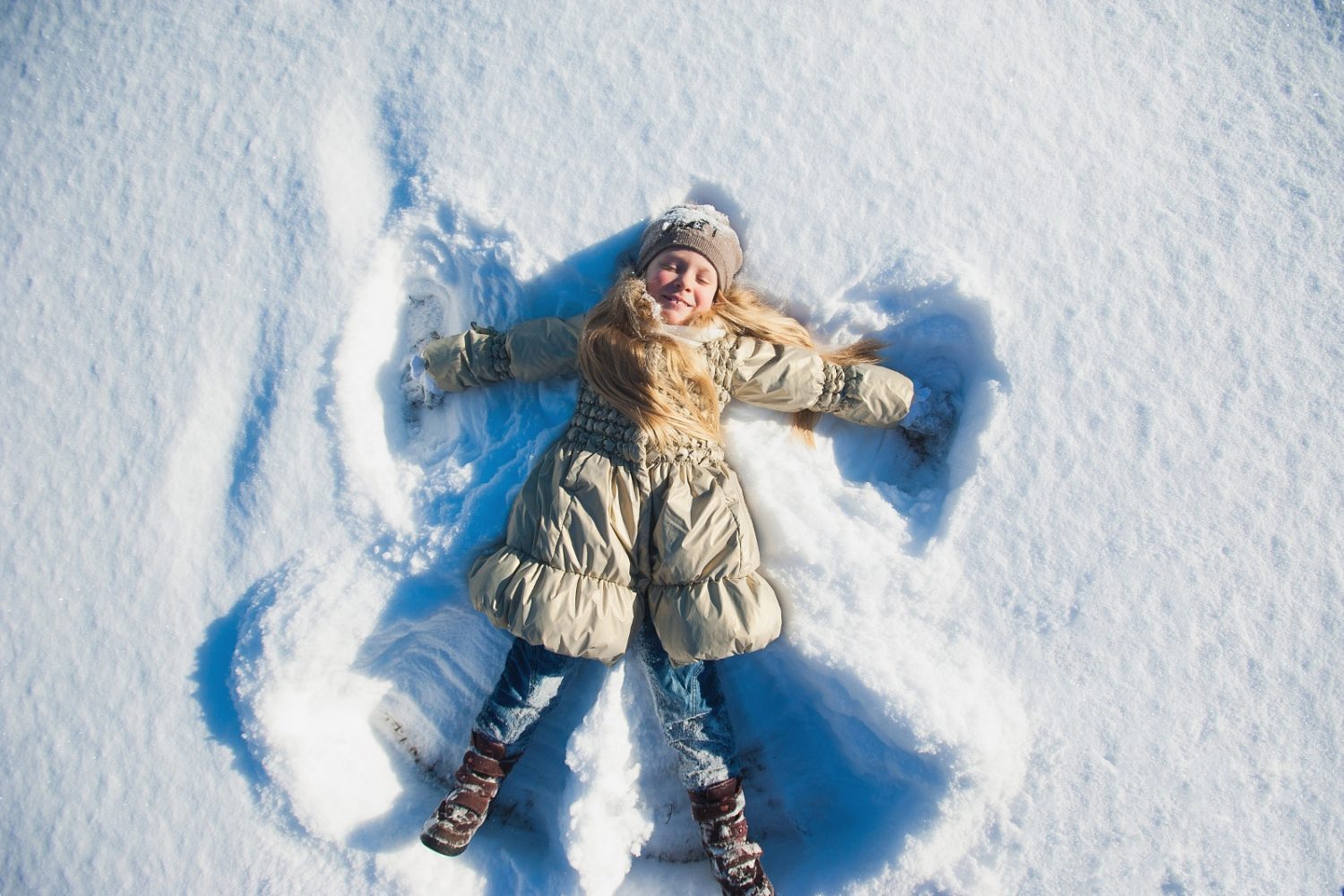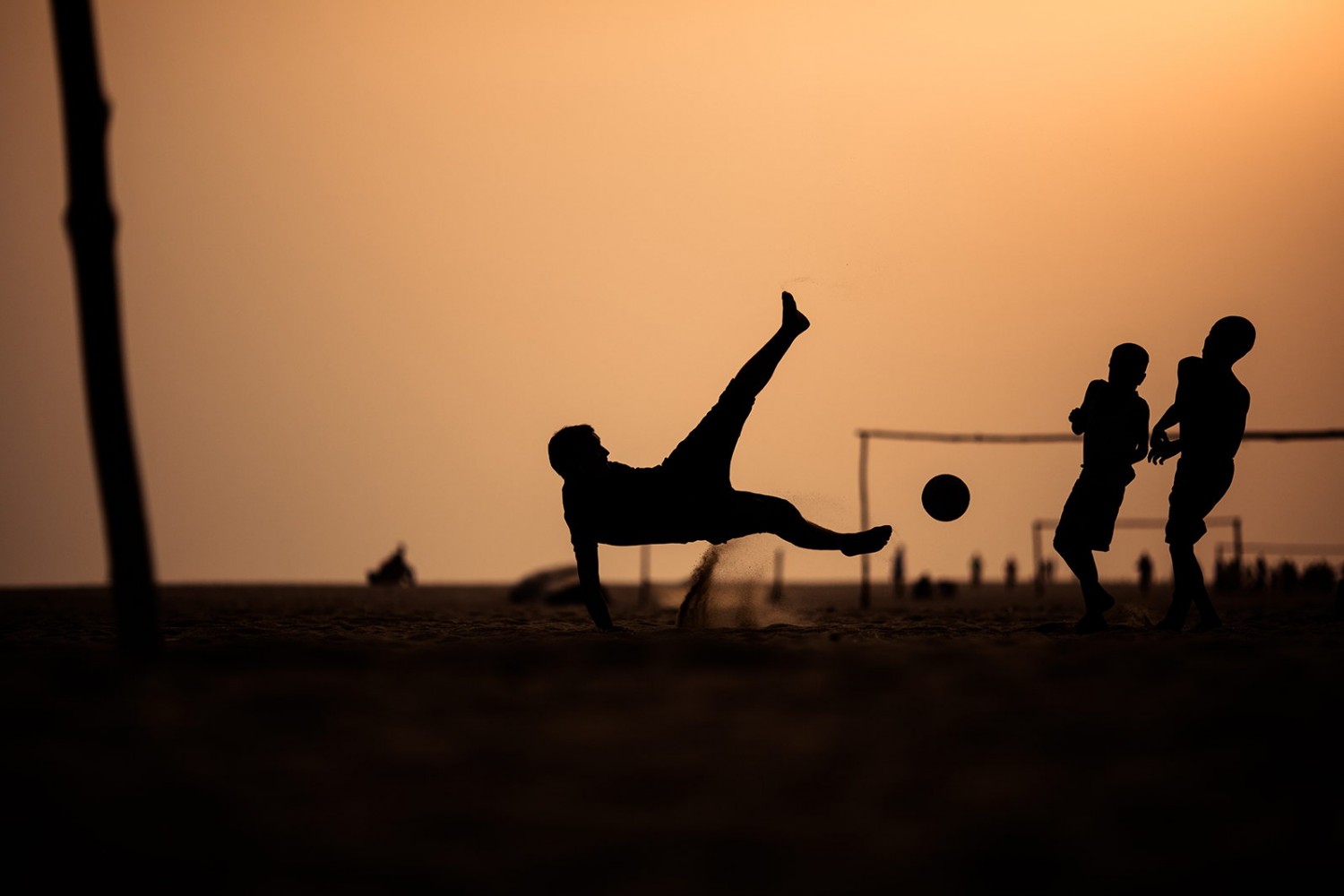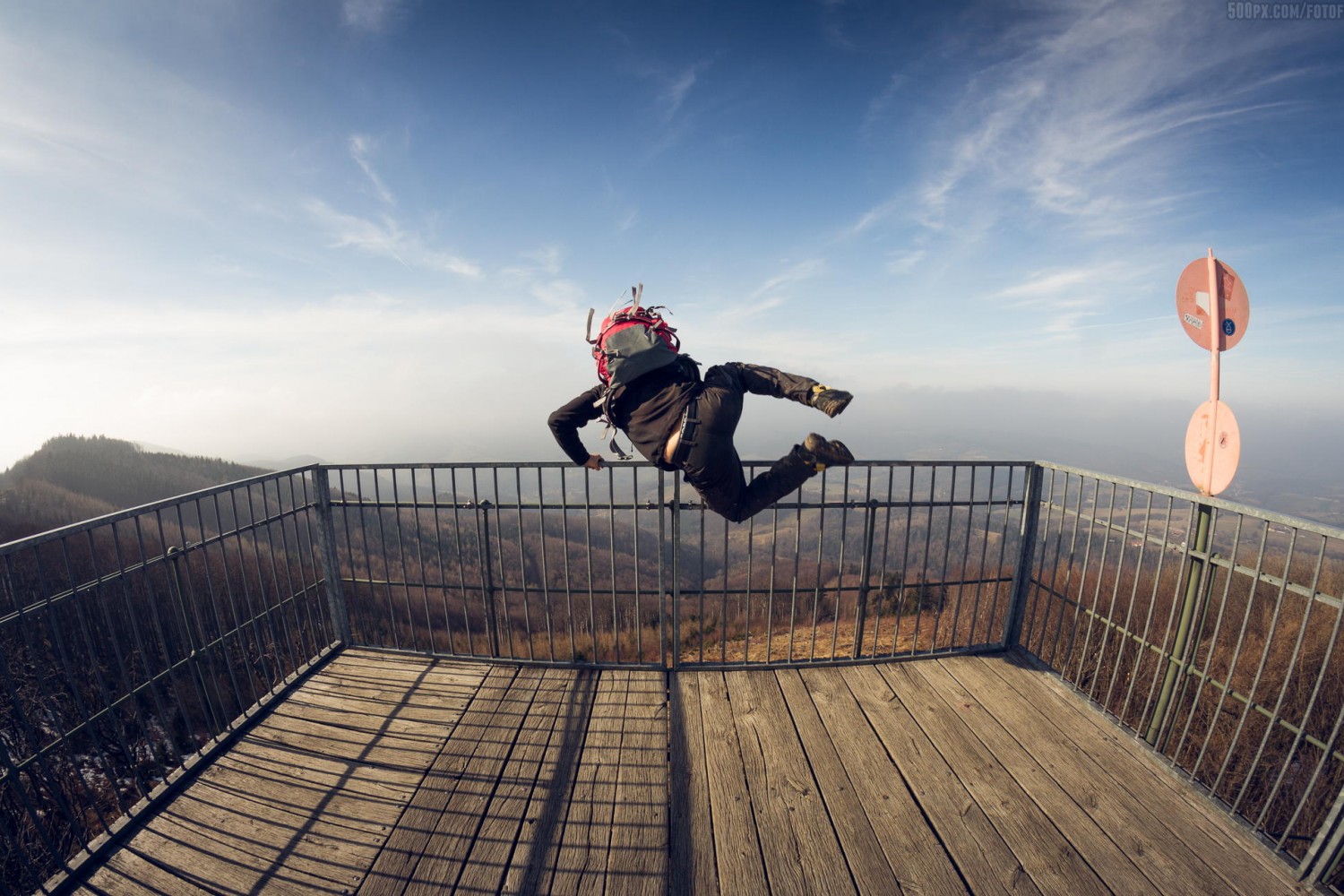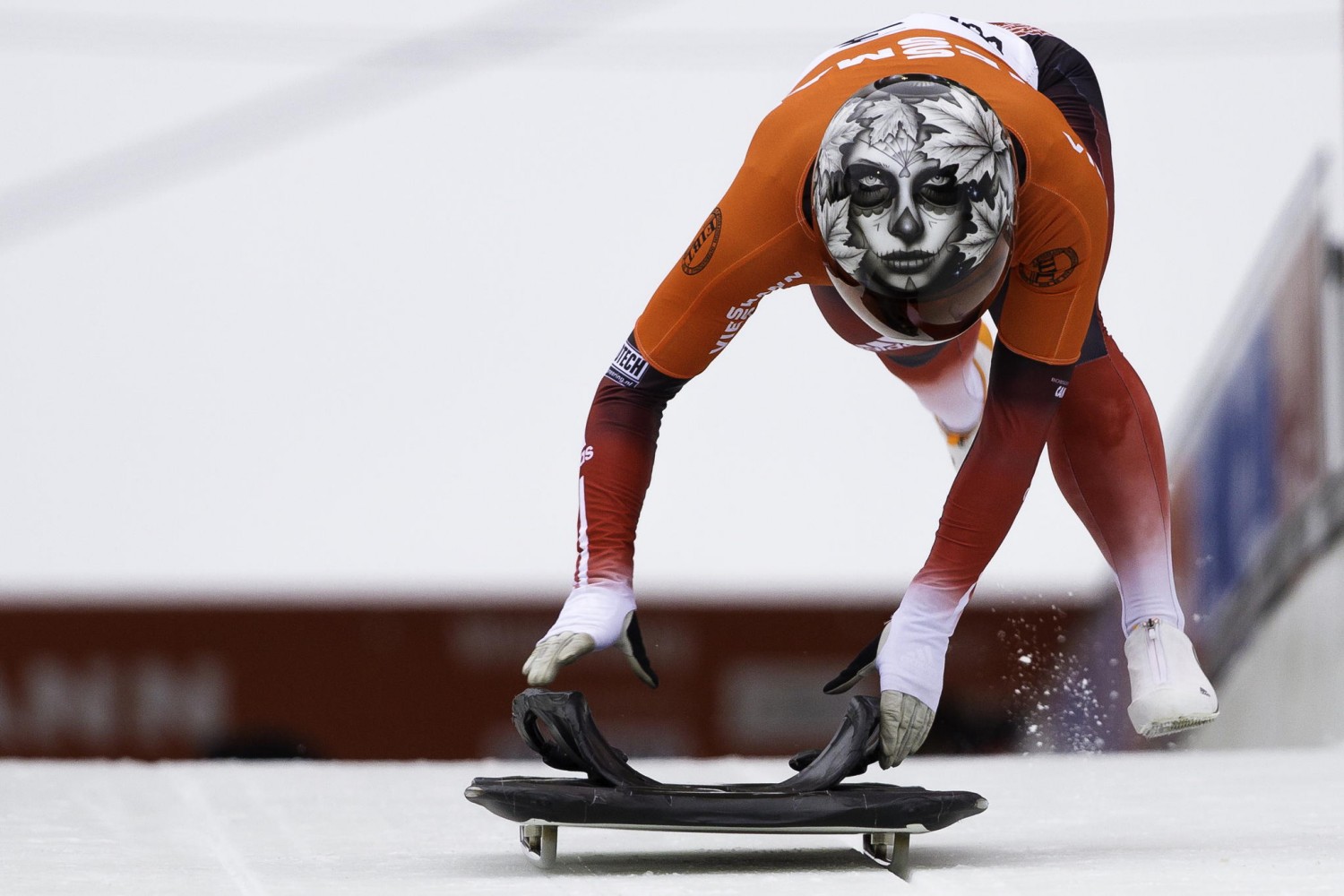Ever wonder what it’s like to photograph football for the NFL? When the Rams moved from St. Louis to Los Angeles, Jeff Lewis got the position as team photographer. He reflects on some of his favorite photos from the Rams’s first season in L.A and shares how he captured all the action.
L.A. Rams Training Camp
Being the new team photographer, the goal was to give the images a fresh new look for a new city. In St. Louis, the team played in a dome and most of the pictures were taken indoors or in poorly lit situations. Los Angeles has lots of sunshine which made for a great backdrop for many pictures to show the Rams were in a new home. With the first pick in the NFL draft, the Rams drafted Jared Goff. The thought with this image was to photograph him in a way to show him, the team, and some sunshine all in the same frame as dynamic as my access would allow. I mounted a Canon 1Dx on a monopod with a fisheye lens and extended the monopod high as I could hold it and stood behind the team as they practiced. Goff happened to drop back to pass and stopped about 5 yards in front of me, clearly putting me in the way, but with the given access, I stayed still and fired off a number of shots.
Fan Interaction
As team photographer, part of the job is to photograph fan interaction. During training camp, we photograph just about every player each time he walks towards the fans and signs autographs. For this image, I chose a fisheye lens and photographed him from below. I was looking to find an angle that completely filled the frame with Goff in the middle surrounded by fans—and a low angle, shooting up accomplished that goal.
Traveling with the Team
NFL teams travel to at least eight road games a season plus two road preseason games. My job initially is to show what that looks like to fans on social media. In this picture, our players are getting off the plane. Shooting a low angle allowed me to get the plane, players, and a nice blue sky.
A Players’s Point of View
I’ve always been passionate about football and seeing football from a player’s point of view. I played football in high school and two years in college, and since players wear helmets, I mounted a face mask onto a helmet and ran out with the team.
Pro Tip:
The lens of choice to get the correct perspective is a 16-35. Focus the camera using one focal point in the center and fire away. When running around with a facemask attached to the camera, shoot players at eye level. You are mimicking a player’s point of view, so your camera’s eye should be at their eye level.
In the Locker Room
Locker rooms before a game can be quietly intense as players and coaches are preparing for the game. Players sit and meditate, stretch, listen to music, or do anything to get in the right mood. As team photographer, I’m able to photograph some of these special moments. In this picture, our defensive coordinator sits as he goes over his game plan off in a separate room, away from players and any distractions. For this picture, I used a 70-200 and shot it through a doorway as to not disturb our coach.
Coin Toss
Football games start with a coin toss. My goal was to photograph the referee along with the captains of both teams. For this shot, I used a fisheye lens and put the camera between two players to show our logo and the New York Giants on the opposite side of the referee.
Capturing the Action
Action pictures are the brunt of what we shoot during the season. The focus tends to be on the running back and quarterback, but our objective is to get a good action picture of every player. This is an image of our corner back, Trumaine Johnson, breaking up a pass. For this image, I used a 400mm lens and focused on Trumaine before the play started. The situation in the game was 3rd and 12, which is a passing down, so I knew the ball was going to be thrown. Knowing and understanding the rules and strategies of the game paid off as Trumaine blocked a pass thrown to the receiver he was covering.
From the Sidelines
Football is a game of field position. In this particular picture, the Seattle Seahawks were pinned deep in their territory, meaning I could go to the back of the end zone behind them and photograph our players pretty close. Usually, from a sideline, the play tends to be 20-30 yards away, but if they are back on the 5-yard line, they are 15 yards from the back of the end zone. When this situation occurs in a game, I usually grab my 70-200 and lie on the ground with a right angle finder so I’m able to put the camera on the ground for a different perspective. All action pictures don’t have to be shot using a 400mm lens on a monopod. I love low angle pictures of athletes because the unusual angle makes the athletes look more prominent and brings the crown in the frame with the low horizon.
Usually, when photographing a football game, we use multiple lenses and cameras. Reason being that we can’t change lenses fast enough during a play to be able to get a shot as the play suddenly moves right in front of you. For this particular play, I started with my 400mm lens and as the quarterback rolled out to pass, I noticed a receiver out of the corner of my eyes and dropped the 400 on the ground and picked up my 70-200 mounted on a matching camera.
As team photographer, I have to photograph all of our star players in a normal type of way. With a 400mm, using a motor drive, showing him in action. Running backs should have pictures running the ball, quarterbacks should have images throwing the ball, and defensive players should have pictures making tackles. This particular image shows our running back Todd Gurley running with the ball and stiff-arming a defender for the Tampa Bay Buccaneers. For images of isolated players, try to stay on the player for a few plays. I tend to focus on them before the play and follow them regardless of what they do. If they end up with the ball, which happens more often than not, you have fulfilled your task.
Kicking the ball is a major part of the game but light never shines on the holder. We see images of the kicker on TV and in our media but never the holder. For this image, I focused on the player holding the ball for the kicker. Back button focus is used while shooting football to give more control when focusing. Otherwise, it makes it difficult to shoot a player running or standing when another player runs by. In this image, as the kicker runs in front of the holder, I pulled my finger off the back button focus to keep the holder sharp. Once the ball is kicked, grass usually flies adding an extra element in the frame.
About Jeff Lewis
Based in Southern California, Jeff Lewis’ passion for sports has taken him all around the world for sports action and portrait assignments for magazines, newspapers, and corporate clients. Jeff has photographed many high profile events including the Super Bowl and NBA Finals for clients such as the Associated Press and the NFL. Jeff’s work has been featured on the cover and in the pages of ESPN the Magazine, Sports Illustrated, the Los Angeles Times, New York Times, and many sports websites around the world.
Check out more of Jeff Lewis’ photography:
500px: https://500px.com/jjlewis06
Website: http://www.JeffLewisPhotography.com
Instagram: @jjlewis06
Twitter: @jefflewis06


















Leave a reply